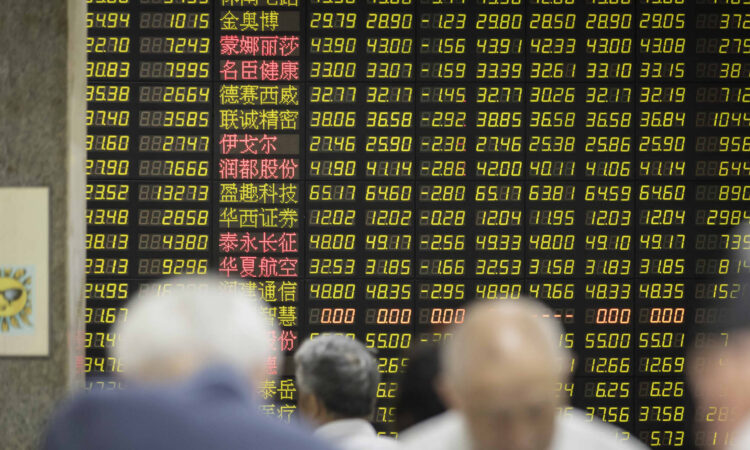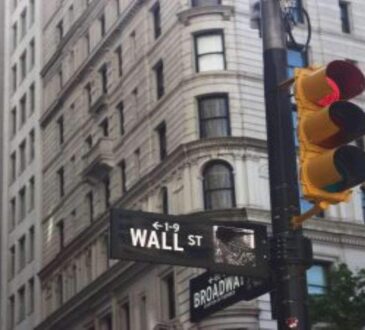Megacap U.S. stocks are carrying the rest of the world. Here are the risks, and where to look for diversification

Megacap tech stocks aren’t just powering the U.S. stock market — they’re also holding the world together. U.S. equities now comprise 70% of the MSCI World Index, the benchmark for large- and mid-cap companies across 23 developed markets. This level represents the largest country weight since the index’s inception in 1986; and correspondingly, the lowest exposure to non-U.S. stocks. The top five largest-cap U.S. stocks — Apple , Microsoft , Nvidia , Amazon and Meta — account for nearly a fifth of the index. The MSCI World Index shifts regional and country weights based on broader economic trends. Japanese equities accounted for more than 40% of representation during the 1980s prior to the asset price bubble. In the early 2000s, European markets grew to more than a third of the index’s weight due to strong economic growth. However, no single market has achieved such a high level of concentration as the U.S. market. To put this into perspective, “if you allocate $1 of your retirement account passively to URTH,” — the corresponding iShares ETF to the MSCI World index — “70 cents goes into the US equities and 18 cents into the top 5 U.S. stocks,” Goldman Sachs managing director Scott Rubner said in a note Feb. 12. The lack of diversification is risky because it makes the global market reliant upon company-specific factors. But for asset managers — particularly those focused on delivering returns over a shorter time frame — there aren’t clear diversification alternatives that can deliver growth. Risks BCA Research chief investment strategist Peter Berezin said this concentration is reminiscent of instances that preceded steep market downturns. High levels of market concentration in the late 1920s to early 1930s, as well as 2000, coincided with a market top, he noted. Ironically, the stock market tends to rise during periods of increasing concentration, Berezin said, while noting that it’s unclear whether concentration will further rise. “The market is kind of on dangerous ground right now,” Berezin said. “The risk of something going wrong is quite elevated. So I think longer term investors should take what they’re seeing now, with this megacap tech rally, as an indication that the party will probably be over by the end of this year.” This massive tilt toward U.S. stocks over the rest of the world comes as major tech companies have seen shares rally on bets artificial intelligence will bolster profits. Nvidia was the clear winner of last year’s AI-fueled rally, soaring more than 200%. Meta Platforms, Alphabet, Microsoft and Apple also saw sharp gains last year. Four of the five stocks in that group are higher year to date. NVDA GOOGL,META,MSFT,AAPL 1Y mountain Big Tech winners in past year “The premium they command is dangerous for us. As long as momentum is in the ‘Magnificent Seven,’ short-term portfolio performance is going to be hinged on the good and the bad of it.” said Phillip Colmar, managing director and global strategist at MRB Partners, referring to the seven-largest U.S. stocks by market cap. “There is a risk in the late stages of these kinds of run-ups when everything is really frothy and euphoria is huge, that if you don’t participate, you get canned.” The strategist also highlighted the similarities of the current high-concentration rally to the dotcom bubble in the late 1990s, when many shorter-term investors who diversified away from tech in 1999 were wiped out just before the bubble burst in early 2000. To be sure, while high concentration generally isn’t healthy for markets – “there’s a lot more active risk from not owning these names than there is from owning them — because that’s what’s in the overall market,” according to Mike Dickson, head of research and product development at Horizon Investments. “If you’re an active manager, there’s no way you’re holding massive overweights to all of these names. And so it is definitely challenging from an active management perspective. But it doesn’t necessarily mean it can’t keep happening,” Dickson said. Opportunities elsewhere? Another contributing factor toward the lack of diversification is the repatriation of funds in overseas markets back to the U.S. In particular, the confidence crisis in China’s stock market and geopolitical woes in Europe have dented sentiment in major overseas markets. Colmar, who recommends diversifying away from the U.S. market, highlighted Japan as a bright spot in Asia — which is also one of Warren Buffett’s top picks. Despite the latest economic growth showing the country slipped into a recession, Colmar said the country is a tactical buy. “I would like to see the domestic data sequentially improve. It would really support the case,” Colmar said. “But I don’t think it starts from there; I think it starts from a global trade cycle.” Combined with a cheap Yen and government-aided domestic momentum, there may be potential that could be unlocked, he said. Japan’s Nikkei 225 is up more than 14% in 2024, outpacing the S & P 500’s 4.9% rise. Over the last 12 months, the Nikkei has rallied 39.3%. It’s also trading near record levels not seen in more than 30 years. On the other hand, portfolio managers are mixed on the opportunity in European equities. Earnings across European companies are outperforming. Meanwhile, general pessimism toward the euro zone means that stocks are trading at a discount and creating an opportunity there, Colmar said. “In a world where you’ve got decent, underlying global growth, and maybe a higher bond yield environment, you want to be in place where you have earnings support and evaluations on your side,” said the strategist. Berezin, however, remains more pessimistic on the euro zone’s prospects. He advised investors to focus on sectors, rather than regions, when evaluating their allocations. Although European stocks are cheap across the board due to the region’s few tech names, the tech it does have “is actually quite expensive,” Berezin said, citing Dutch chipmaker ASML as an example. The Europe Stoxx 600 has risen only 2.6% year to date, underperforming the U.S. broad market index. Individual country indices are not faring much better. The British FTSE 100 is down 0.3% for the year, while the Spanish IBEX 35 is lower by more than 2%. While the Germany DAX , France CAC 40 are up around 2% and 3% each, they too are still underperforming the S & P 500.

